Autumn Gear Guide
Find inspiration in our Gear Guide that will keep you out on your bike through wind or rain.
Download NowRecently, there were photos published in the city of Toronto of a thief in broad daylight smashing a poor defenceless bicycle lock to smithereens with a rock. Yes, there is all manner of sophisticated techniques and tools employed as well, but when so little is done to control the epidemic, apparently even a rock will […]
Recently, there were photos published in the city of Toronto of a thief in broad daylight smashing a poor defenceless bicycle lock to smithereens with a rock. Yes, there is all manner of sophisticated techniques and tools employed as well, but when so little is done to control the epidemic, apparently even a rock will do the trick.
Bicycle theft continues to rip the hearts out of urban cyclists in cities. One recent report indicated the number is up near two million bikes every year are stolen in North America, representing billions of dollars.
Most cyclists have felt the sting at least once, and it makes us all very sad. But it also stops a certain percentage of people from cycling altogether — seven per cent! If we want to get serious about bicycles as a lean and green means of transportation in our cities, we need to invest in theft protection via bicycle locks and insurance, as well as reporting crimes to the police.
There are many types of bicycle locks for many different occasions, so there is no excuse to not use one even if it’s just for a quick trip to the café to pick up a coffee. Herewith, is our handy-dandy guide to understanding the variety of locks on the market.
This type of lock is the most common style on the market and works similarly to a giant padlock with a u-shaped rod that secures into place in a straight locking bar. If you don’t plan on having your bike out of your sight for very long carrying around a heavy lock might not be necessary, but if security is the priority then this is the type of lock to get. A u-lock can also be used in combination with an accessory cable to provide an additional deterrent to thieves while also securing the front wheel.
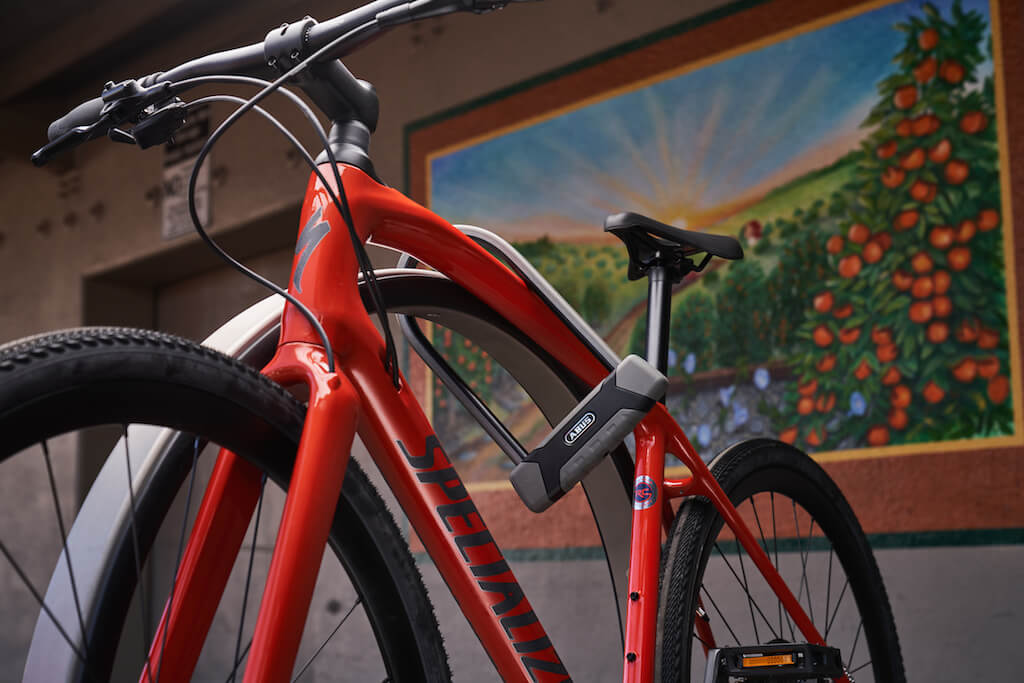
Pros: U-locks can be quite secure, the thicker the better, and are easy to transport in a seat tube bracket.
Cons: Heavy, not as flexible in terms of the variety of places it can be locked.
Check out: Abus Granit X-Plus 540
We love a good folding lock. These locks are constructed of a series of interconnected metal plates that are riveted together. The lock unfolds and can wrap around a variety of objects. When not in use, folding locks are smaller than u-locks and can be similarly attached to bicycle frames.
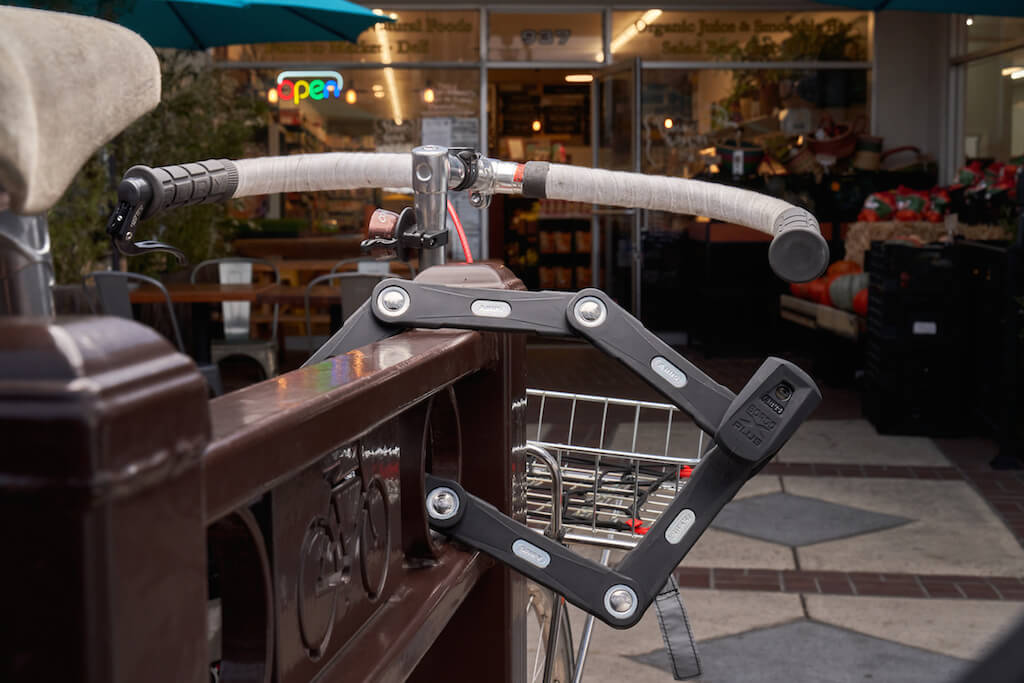
Pros: The folding lock design makes it versatile, and portable, providing a good amount of security.
Cons: It can be somewhat more time consuming to use a folding lock, and the size and complexity make it a bit more challenging to use. There are also a lot of moving parts that could get bent out of shape.
Check out: Bordo GRANIT Xplus 6500
If intimidation of would-be thieves has anything to do with the success of a bicycle security device then a big, thick chain with integrated locking mechanism and chunky padlock are just the tickets. Chains are super tough, and so are some padlocks, but a lock is only as tough as its weakest point.
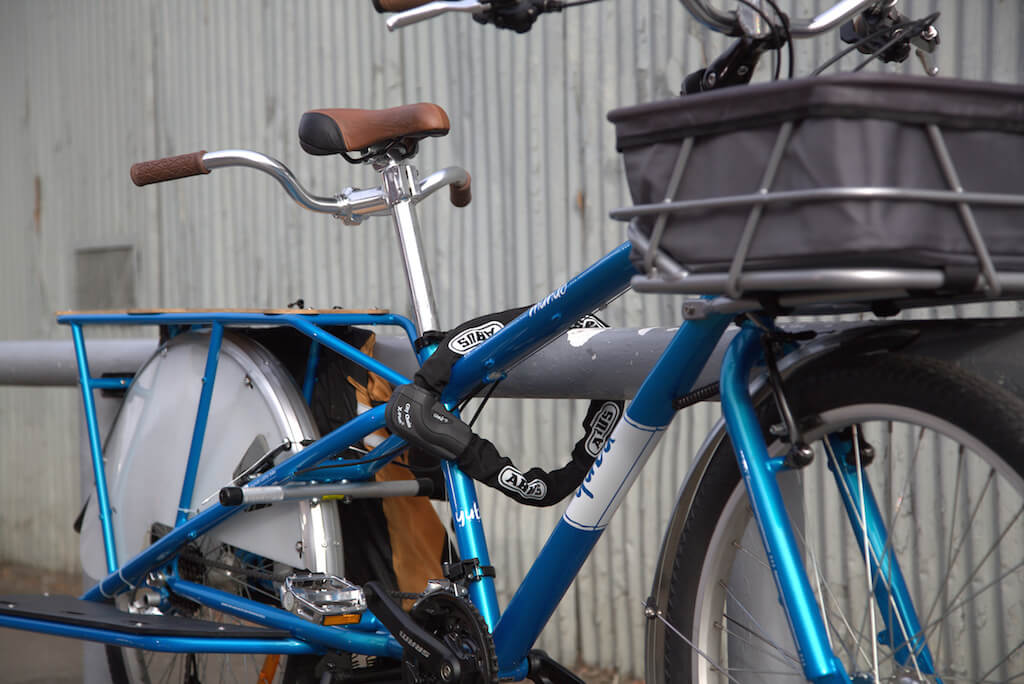
Pros: Tough and durable and can be looped around a variety of objects quite easily.
Cons: Heavy and more difficult to transport, not as secure as other locks.
Check out: GRANIT XPlus 1060 Chain
Although one might think a quick trip to the corner store is safe, turn your back on a beautiful bicycle for a minute and that’s all it might take, especially if no lock is involved. That’s why frame or café locks were invented — as a deterrent for quick trips. It takes just a second to engage the lock so there is no need to fumble with large chains and u-locks. The frame lock attaches to the rear strut and when engaged immobilizes the rear wheel.
Frame locks can also be used with adapter chains that bump up the security level to create a simple and convenient package. The adapter chain can wrap around a fixed object and attaches to the frame lock housing, doubling the security.
In high-theft areas, frame Locks and adapter chains are a great add-on to one of the above options.
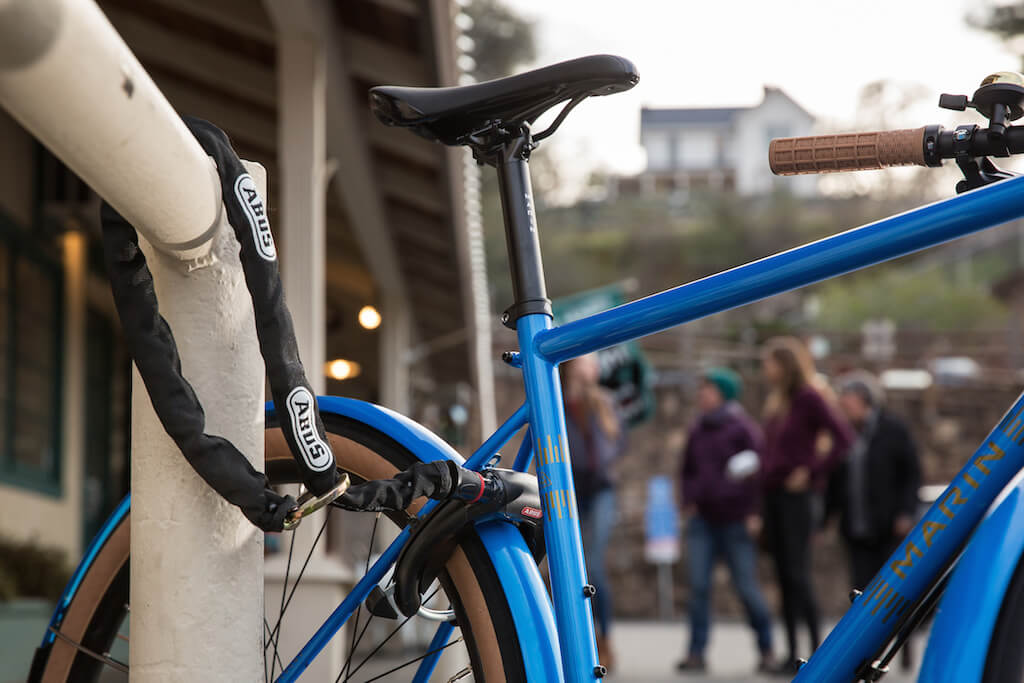
Pros: Simple, light, easy and fast to use.
Cons: Provides a lesser amount of security and should only be used for shorter stops or in addition to other security measures such as an adapter chain.
Check out: Pro Shield XPlus 5955 Frame Lock and ACH adapter chain
Disc Brake Lock (with or without sound): This type of lock immobilizes a disc brake on a bicycle. It doesn’t offer much security, but is quick and easy. Some offer the option of a sound alarm as well for some added security. These types of locks are used more widely with motorized scooters and motorcycles, but there are some bicycle options as well.
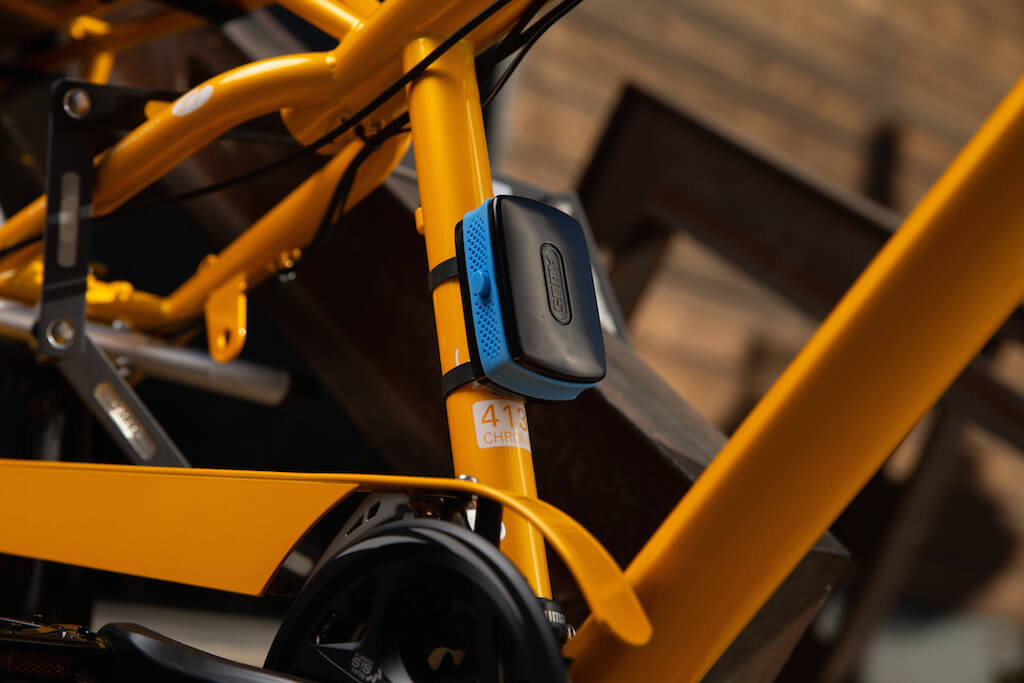
Alarms: While not a lock, adding an alarm can be a secondary deterrent against theft. One option for this type of alarm is the AlarmBox 2.0. The AlarmBox 2.0 can also be used in conjunction with an adapter chain.
Zip locks: These lightweight and very easy to carry locks are simply straps that wrap around a bicycle tube and a fixed object and have a combination lock to secure it. This style of lock would be cut in a few seconds by a thief, and as a result are worthy of noting, but should not be used to secure anything of value.
Before you go, check out this guide on the right and wrong ways to lock your bike.
Find inspiration in our Gear Guide that will keep you out on your bike through wind or rain.
Download Now
OMG only the frames of the photographed bikes have been locked. I know it’s not a how to article, but please show examples where at least one wheel is secured, along with the frame.
Comments are closed.